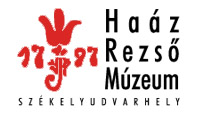Kovács Petronella (szerk.): Isis - Erdélyi magyar restaurátor füzetek 11. (Székelyudvarhely, 2011)
M-Kiss András: Egy elázott madágyűjtemény konzerválási problémái
of sheets inside the volume with calcium phytate solution in order to neutralise excess Fe(II) ions, the cause of ink corrosion damage. During this process, the part of the text block underneath a sheet was protected by polyethylene foil. Blotting papers placed under the sheet drained the liquids applied and therefore had to be replaced frequently. To speed up drying, a hair-dryer was used to prevent the forming of water-stains and the seeping of water to the spine. Losses in the paper sheets were filled out with paper pulp made from cellulose fibre of various colours and substances. Subsequent sizing of the sheets was carried out with the solution of Klucel J (hydroxypropyl cellulose) in ethanol. After removing the old adhesive, the cords were completed with hemp strings, and then the sheets and the endpapers, complete with flyleaves, which had been taken down and repaired, were re-fastened on the spine. The binding leather was cleaned with cleaning emulsion. Infilling, with the exception of the ribbon, was done with the use of dyed pigskin. Wheat starch was used to stick back the original leather parts, and two-component epoxy resin to fasten the back cover. The missing clasps were replaced by new ones made from sheet-brass with suitable ornamentation. The back cover received only a handmade paper band, leaving the old repair work visible and at the same time fastening the text block to the cover. The notefilled original paste-down thus became a second flyleaf. Csilla Farkas Librarian, book conservator Országos Széchényi Könyvtár 1105 Budapest, Harmat u. 70. I. 5. Mobil: +36-70-224-2142 E-mail: csfarkas@oszk.hu Hajnalka Barabás Proceeds of the Exhibition ’Useless fragile things’ made in Remembrance of István Sovánka Sovánka István János was bom in 1858 in Liptovsky Mikulás (today’s Slovakia) and died in 1944 in Sepsibiikszád (Bixad today’s Romania). Between 1875 and 1880 he was a student of a wood-carving school in Uhrovec, later he turned to glass art and became the designer of the glass manufacture in Uhrovec. As Uhrovec was the most developed glass manufacture in that region, Sovánka had the opportunity to produce high-class glassware, in line with the European standards. His first success was brought by a more than 2-metre-high baptismal font exhibited during the Millennium Exhibition in Budapest in 1896. Sovánka was not only successful in applying new techniques in glass art (e.g. multi-layered glass) but also in introducing varied and unique forms. His activity and artistic conception can be related to the work of the French Art Nouveau artist, Emile Gallé. The latter’s influence can be traced in Sovánka’s practice of etching multi-layered glasses. Beginnig with the turn of the century, Sovánka took part in major exhibitions at home and abroad, his works thus being widely recognized. The first part of his glorious artistic career came to an end in 1907 when he moved to Sepsibükszád to become the leading artist of the glass manufacture there. That glass manufacture stopped his activity in 1914, after that time Sovánka made wooden toys for children. Hajnalka Barabás Art historian Mobil: +40-724-278-407 E-mail: hajnalba@yahoo.com Éva Mester Glass Painting in the Carpathian Basin, Part III Restoration of Glass Paintings and Glass Ornamentation Owing to a succession of wars ravaging in the Carpathian Basin, glass paintings have been destroyed. As archaeologist Katalin H. Gyürky writes on researches conducted into Hungarian glass paintings from the Middle Ages and on the elaboration of finds, “Nearly all objects of the material culture of the Middle Ages have come to light in a state of fragmentation in Hungary. However, through their reconstruction, we have succeeded in outlining a culture that is equivalent to that of any country in Europe ...” In order to be able to salvage deteriorating mediaeval glass paintings, feverish research work started in the early 19th century to recover and reinterpret old procedures and recipe books. Combined with the achievements of technological revolution, such activities led to a large-scale development in glass painting. Revivalist architecture had a great demand for glass paintings. Owing to her political and economic conditions, Hungary joined in the European trends with a delay of a few decades, but the international successes achieved at the turn of the 19th and 20th century attested to the development. Disadvantage eventually turned into an advantage: glass painters could utilise the end results of earlier experimental work, because by then a wide range of high-standard glass base materials were available. This allowed the succession of workshops that had been founded in the second half of the 19th century to concentrate on high artistic and technological standards. The large-scale construction work that had been going on at the time ensured a large number of commissions. Alongside similarities, certain specific characteristics and unique features of individual workshops can be detected even on unsigned items. The deterioration processes that take place in glass paintings and glass ornamentation, which were made in the Carpathian Basin and which displayed a wide variety of compositions, materials and technical procedures, call for restoration methods that are different from those employed for their medieval counterparts. An international agreement 194
